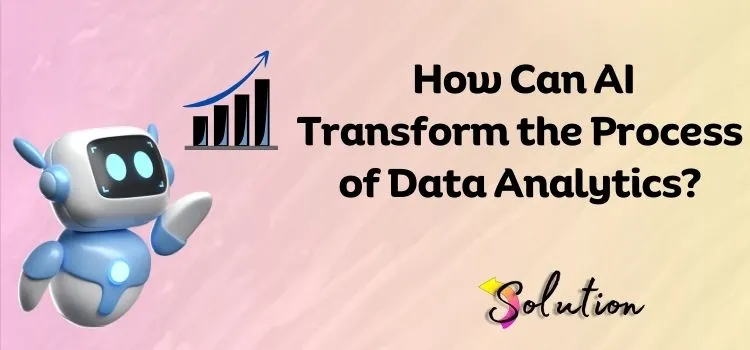
We live in a world where technology changes dramatically on a daily basis. Everything is now under control thanks to improved technologies. In recent years, artificial intelligence has emerged as the most significant transformative force. Today we will discuss one of the primary areas where AI has had a significant impact: “Data Analysis.”. There is nothing improper with claiming that AI has a number of features for assessing data.
If you have any questions about what AI data analytics is, how it differs from traditional analytics, and how AI is changing the entire data analytics process? Then you’ve come to the right spot. Below are the answers to all of your inquiries.
What is Data Analytics?
An AI in data analytics refers to the application of artificial intelligence technologies to automate and enhance the data analysis process. Machine learning in data analytics is the use of ML algorithms to learn from and forecast data. This algorithm can process vast amounts of data more rapidly and accurately than traditional approaches.
Furthermore, it reduces the number of human errors, which can boost productivity and save time. Businesses that incorporate modern technology into data analytics can not only process data more effectively but also acquire deeper and more actionable insights. This will lead to better decision-making and more strategic corporate operations.
How can Artificial Intelligence Transform Data Analytics?
There are several ways in which AI is changing the way data analysis is done. To help you understand this further, we’ve developed a list of the benefits you’ll get when you use artificial intelligence. Please have a look to see how it will affect your data analytics procedure:
- Optimize Workflow: Data analysts devote a significant amount of effort to managing the data life cycle assignments. This will entail basic chores like data cleaning, organization, and visualization. People will be able to reclaim their time through automated data analytics, allowing them to focus on higher-value work.
Automation has the advantage of simplifying data administration while also reducing manual errors. The intricacy of viewing drastically changing data is decreased, and analysts may easily focus on spotting minor anomalies or uncovering hidden patterns to make a hugely beneficial conclusion.
- Improve Accuracy: When it comes to technology, the likelihood of mistakes is minimized. AI provides its users with greater accuracy and precision in data analysis. Using machine learning algorithms, AI can uncover subtle trends and correlations in data that human analysts may miss. This may lead to more accurate predictions and suggestions, resulting in improved business outcomes.
AI-enabled, automated, and accurate data analytics are changing the future of every organization by bridging agility. The future of data automation will only be rich if we mitigate its negative repercussions. If you wish to avoid complications when studying data, you should use AI.
- Speed up the Process: Artificial intelligence (AI) accelerates data analysis by automating complex and repetitive activities. AI systems process vast amounts of data in real time, detecting patterns and trends that people may take days or weeks to discover. Machine learning models improve the process by adapting and improving over time, resulting in more accurate predictions and insights.
Natural language processing (NLP), an AI-powered technique, swiftly extracts meaningful information from unstructured data such as text and images. Furthermore, AI improves decision-making by offering visuals and actionable insights, allowing businesses to respond to obstacles and opportunities more quickly. This efficiency promotes innovation and competitive advantage.
What’s the Difference Between Traditional and AI Analytics?
For many years, conventional analytics served as the core of business intelligence, encompassing the collection of historical data, informed decision-making, and statistical analysis. While this system has advantages, it also has limits because it is based on a set of rules and static models. Traditional analytics are excellent for evaluating previous performance, but they lack the capacity to forecast future patterns or prescribe the best measures.
In today’s high-tech world, taking a retrospective approach can hurt enterprises. On the other side, artificial intelligence (AI) represents a dramatic advance in data-driven decision-making. Unlike traditional analytics, it can analyze huge amounts of data in real time, allowing businesses to see developing patterns and trends that might otherwise go undetected. This predictive power enables firms to respond proactively to market shifts.
Also Read:- Top 8 AI Email Tools
End note!
In conclusion, as AI evolves, leveraging its power responsibly and effectively will be critical to your business’s success. Those who understand how to use AI most effectively while analyzing will be in the best position to negotiate the complexity of their industries, innovate consistently, and foster a culture of data-driven greatness. The application of artificial intelligence to analytics provides capabilities beyond those of traditional data analysts, as traditional analytics typically involve significant manual work. Once you understand the fundamentals of AI in data analysis, businesses may use this technology to get useful insights and improve their capacity to make beneficial decisions.


